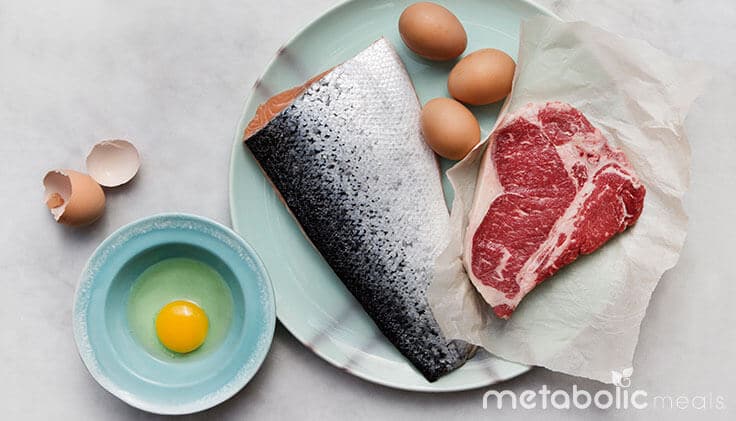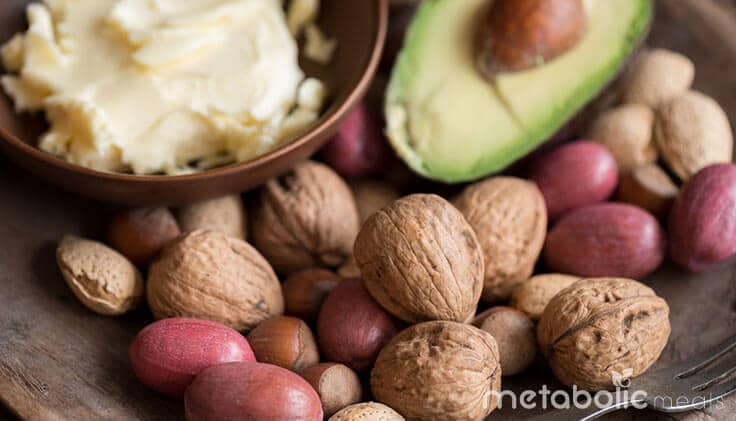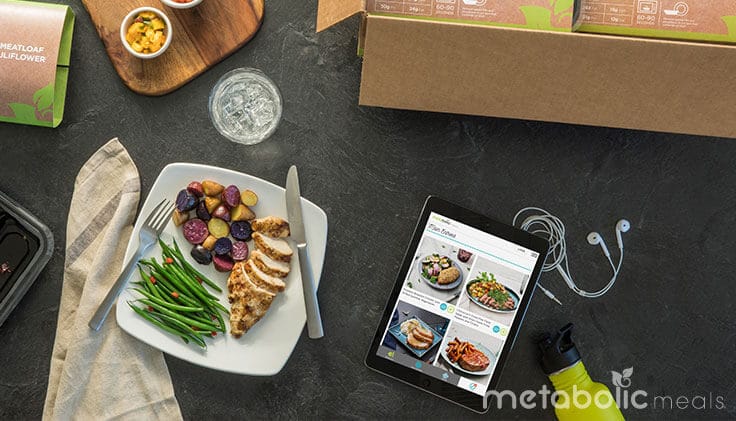Gaining weight. Sounds easy, doesn’t it? For the “throw caution to the wind, completely sedentary and willing to shove anything in their mouths” type of individual, weight gain is very easy. For the rest of us, (you know, the folks who are very thoughtful about how we eat, live an active lifestyle and for whatever reason, need to gain some weight), it can actually be quite difficult.
This is especially true if we are talking about hard charging athletes. In the world I live in (college strength and conditioning), cycling our training to increase muscle mass happens 2-3 times a year. My footballers, wrestlers, baseball kids and other “size” focused sports will inevitably be tasked with packing on weight. Not as often, but here and again, many of my female athletes will need to see a rise in their bodyweight for both performance and the armoring for normal wear and tear of their competitive seasons.
The Twinkies and Ice Cream Diet
Now, weight gain for weight gain’s sake is just as useless as a freakish dive when trying to trim up. Sure, a sudden surge in either direction can help meet some temporary goal, but the human body is masterful at finding some semblance of balance. Those folks who radically cut calories in an attempt to hit a weight loss goal will find themselves right back at their starting point once their normal eating habits resume, they rehydrate and start living their lives. The same is true for an 18,000 calorie weekend blowout of tacos, burgers, pizza and soda. Yes, you might see a sudden bump up, but once you carry on with your normal day-to-day, your body will move out the excess and pack some of those calories where we don’t want it (in your waist and hips).
Seriously Though…
Knowing that it is no one’s goal to increase weight by layering on body fat, we will agree that the goal is to increase lean body mass intelligently. In order to know how to get where you want to go, you need to know where you are. This does not mean simply knowing what the scale says. See, in order to hold your bodyweight exactly where it is at, there is a fairly rigid set amount of calories that you must ingest to stay put. Your height, current weight, age, and activity level, all have to be taken into consideration as you build an understanding of where your calorie thresholds sit. An easy way to do this is to go to your favorite search engine and type the letters: TDEE. Total Daily Energy Expenditure. I’ve visited about 10 different sites and my totals are within around 30 calories of one another. Once you have an understanding of what that number is, the rest becomes rather simple.
Slow and Steady Wins the Race
Understanding that this is a marathon and not a sprint, the smartest and healthiest way to gain permanent, steady weight is to increase your daily calories by 15-20% of your TDEE total. All things being equal, this should safely allow you to gain one pound a week for as long as you are trying to pack on the pounds. For the average sized guy, that will equate to about an additional 500 calories a day. Since 3,500 calories equals a pound, this is a responsible recommendation. If you increase that percentage over 20% of your TDEE, you are likely going to be packing on soft weight. Steady weight gain is the goal — not a massive surge. Gain any more than a pound a week and you can almost guarantee that a good portion of what you are seeing is fat gain.
Once you have your target number, you need to think about how those calories are going to break down on your plate. If you look at the research, the recommendations are fairly consistent for healthy (muscle) weight gain. Our focus will be how the macronutrients (proteins, carbohydrates and fats) break down to support our calorie count.
Proteins, The Building Block of Muscle
If you are trying to gain solid weight, then you must be detailed about your protein intake. Around 30-35% of your caloric intake should come from animal-sourced proteins. Chicken, fish, pork, eggs and red meats of all different cuts should be your go-to while building your body. For decades, many fattier meats have been demonized by mainstream thinking. Over the past couple of years, the research is pouring in that very lean meats are not the only sources you should consider. Anything in excess is likely a bad idea, but many of the meats we have been told to steer clear of are now understood as being as healthy as their leaner counterparts.
For example, red meats contain high amounts of leucine, an essential amino acid. It is reported that leucine is the only amino acid that halts muscle breakdown and triggers muscle synthesis. Additionally, leucine plays a critical role in regulating blood sugar levels. Think of it as a super amino! You get tons of it eating meats that were once considered taboo.
1 gram of protein = 4 calories
Not Your Mama’s Fats
Fats have gotten a really bad rap over the years. A research study published over 50 years ago, linked to the sugar industry, set in motion one of the most influential and potentially destructive trends in the understanding of nutrition we have ever seen. Fats were considered the devil and the food guide pyramid was born. With a model limiting fat intake to less than 10% of your daily intake, the powers that be instructed us to replace those calories with carbohydrates. Fast forward to today, and our food supply has been perverted with sugar at every turn.
Popularized by Dr. Atkins, and then recently furthered by the enormous popularity of the ketogenic diet, a very low-carb, high-fat diet has shown over and over not to be a threat to your health. Among other things, fats are an additional source of energy, are critical in vitamin absorption, help temperature regulation and are associated with several processes in hormone regulation – particularly testosterone.
You should aim to take in 25-30% of your calorie goal in good fats. Great choices of healthy fats include: avocados, macadamia nuts, olive oil, egg yolks, MCT oil, salmon, hard cheeses and butter (yes, butter).
1 gram of fat = 9 calories
Carbohydrates – Tackling Fuel
If you haven’t seen The Waterboy, then the joke above has totally missed you. Carbohydrates are what give you your get-up-and-go. When most people think about energy, they are thinking about carbohydrates. Carbohydrates fuel the body for the day’s activities and provide the brain with glucose for clear thinking and optimal function.
Carbs are great fuel, but where we need to be careful with carbohydrates is where we are getting them from. Type in the words “carbohydrate’s job” in a Google search and up comes a photo of a soccer ball, a glass of milk and two Pop Tarts. As one of my doctor friends used to say, “Foods like Pop Tarts and Rice Krispies Treats are a pancreatic nightmare.” Sugar on top of sugar filled with sugar.
The rules for carbs in your weight gain then need to be strict. If it comes in a package loaded with preservatives and sits on a shelf, it’s off-limits. No crappy carbs for our plan of attack. Only clean, naturally sourced carbohydrate choices are going to suit our needs. Grains, fruits and veggies will be our go-to. Things like bananas, all different types of potatoes, berries, legumes, oatmeal, rice and quinoa are great choices.
Once you have the fat and protein percentages worked out, the rest of your caloric goals should be carbs. We want to place our ceiling for carbohydrates at 40%, so if for whatever reason your math has you missing the mark, meet your caloric needs by adding in a few more grams of fat or protein to hit your numbers.
A final word on carbohydrates: If you want to do it the right way and keep your weight gain exclusively to muscle, stay away from the junk carbs. Sweets of all kinds and sugary drinks are terrible choices. If you are meeting your carbohydrate needs this way, plan on seeing sloppy weight gain and host of potential health problems.
1 gram of carbohydrate = 4 calories
A Day in the Life
Let’s look at a hypothetical. Ray is the middle linebacker for Cal Poly Football. The coaches have told Ray, and me, he needs to gain 5-10 pounds before the season begins to find himself in contention for the starting position. He’s currently 228 pounds, and for him to even be relevant in the mind of the coaching staff, he needs to be in the mid 230s.
Ray’s current TDEE is 4,311 calories (a lot, I know). In an effort to be very strategic with his weight gain, we are setting Ray at 5,000 calories a day during this bulking time. I will take care of his workouts to make sure he’s doing all the right things in the weight room. His only job is to make sure he’s eating all of his calories.
Here’s what a day’s menu might look like for this young athlete:
Breakfast
Breakfast will be one of the higher fat concentrated meals to keep his energy steady for the long day ahead.
- 4 eggs fried in 1 tbsp butter
- 4 slices cheddar cheese
- 1 avocado
- ½ cup pico de gallo
- 1 cup greek yogurt
Macro totals in calories = 540 fat, 196 protein, 96 carbs
Meal total = 832 calories
Pre-Workout Meal
This meal is focused on getting a carb-dense, easy meal to fuel the intense lift and run.
- 3 cups cooked oatmeal
- 3 tsp brown sugar
- 3 tbsp almond butter
- 1 large banana
Macro totals in calories = 333 fat, 80 protein, 540 carbs
Meal total = 953
Post-Workout Refuel
This “meal” is intended to replace any lost glycogen in the liver and skeletal muscle from the long training session. It is also the only time we are going to have Ray consume anything packaged/prepared.
- 2 scoops Fluid* Collegiate Post-Workout Recovery Mix
Macro totals in calories = 27 fat, 80 protein, 324 carbohydrate
Refuel total = 431 calories
*This is a product formulated by Fluid’s Owner/Founder Richard Smith and I exclusively for Cal Poly’s football program. Along with a solid macronutrient set up, this product is loaded with vitamins and minerals ensuring my guys get at least one solid meal each day.
Lunch
Another higher carbohydrate feeding to make sure his muscles are ready for tomorrow…
- 3 cups gluten-free pasta cooked (spaghetti)
- 2 cups homestyle spaghetti sauce with meat and vegetables
- 2 pieces gluten-free bread
Macro totals in calories = 342 fat, 282 protein, 668 carbohydrate
Lunch total = 1292 calories
Snack Between Classes
We will start dropping the carbs, even out his blood sugar and fuel him for the final push through late afternoon classes.
- 5 large pieces beef jerky
- 2 pieces of string cheese
Macro totals in calories = 333 fat, 188 protein, 44 carbohydrate
Snack total = 565 calories
Dinner
His dinner will be primarily comprised of proteins. Fats will drop dramatically and his only carbs will be from vegetables.
- 3 chicken breasts
- 3 cups steamed broccoli
Macro totals in calories = 36 fat, 396 protein, 72 carbohydrate
Dinner total = 504 calories
Pre-Bedtime Caesin Shake
A last calorie intake to fill his stomach with slow release proteins to keep a steady amino acid flow throughout his night of sleep.
- 2 scoops casein protein
- 8 oz. skim milk
Macro totals in calories = 4 fat, 228 protein, 212 carbohydrates
Bedtime total = 444
Grand Totals
First, Ray is never going to be hungry. The intent of setting him up this way is directly for performance, and less for pleasure eating. His training sessions are 2-2.5 hours, so he’s going to be in need of nutrients early in the day. Once the sun sets, and Ray lays his head down for the night, this is what his day breaks down to:
- Grand total calories – 5021
- Calories from proteins – 1450
- Calories from fats – 1615
- Calories from carbohydrates – 1956
29% proteins, 32% fats, 39% carbohydrates. Almost to the exact number, we hit our ratios and calories.
Troubleshooting Stubborn, or Excessive, Weight Gain
You might find yourself getting into trouble once you have calculated your TDEE, and then begin your weight gain program. I’m assuming you are going to be lifting weights and working in a program where your volumes are higher (a hypertrophy phase or muscle gain phase). When totaling your TDEE, you must take into account how you “intend on working” during this phase, which might be more aggressive than what you are doing now. If you add in cardio for whatever reason, or pick up a new hobby where physical activity is a feature, you need to account for all these activities so we don’t find ourselves in a calorie neutral or negative state. Your TDEE might shift some here and there, so you need to make sure that those calories are being considered and then consumed at the table.
Concurrently, you may have overshot what you think you are doing and now your calories are too high for what you are trying to do. Track your weight weekly so you keep frequent tabs on what is going on. Yes, there could be times when you are holding more water, or haven’t expelled recently, that need to be taken into account. But if you see a 5 pound surge in a week, you might have to go back and look at your numbers to make sure that you aren’t overshooting your target.
Timing of certain macros is also something to be considered. Excessive carbohydrates are simply going to be stored if they aren’t used. The most solid advice I can give you about when to take in a large percentage of your daily total carbohydrate intake would be before, and particularly after, your weight training session. Your muscles are completely zapped of glycogen after a hard charging lift and will soak up carbs like a sponge. Take in around 60% of your daily carbohydrate consumption during the pre- and post-workout meals.
Because we don’t want massive swings in insulin, the best approach for weight gain is to eat 4-6 times a day. No, each meal doesn’t have to be some elaborate production, but we need to divvy up the calories and spread them throughout the day so we can keep the engine fueled without taking in so much at once that the body has no choice other than to store it where we don’t want it.
But Food Prep Sucks…
I totally agree, but it needs to be done. The slipperiest of slopes is not having meals ready when you need to eat. What ends up happening when you don’t have everything prepped is that you find yourself going to the Taco Bell drive-thru, convincing yourself that six soft chicken tacos are healthy … because they are chicken. That is the kiss of death. I know I could get pushback on this, but not all calories are equal.
Having a meal prep service like Metabolic Meals takes the guess work, the prep and the headache out of making sure that you’re getting exactly what you need, when you need it. Because we want very healthy foods sourced from the best things on earth, it’s a wise decision to let the experts give you a hand in your weight gain and healthy eating goals.
Dr. Christopher R. Holder is the Head Strength and Conditioning Coach for Cal Poly Athletics.












